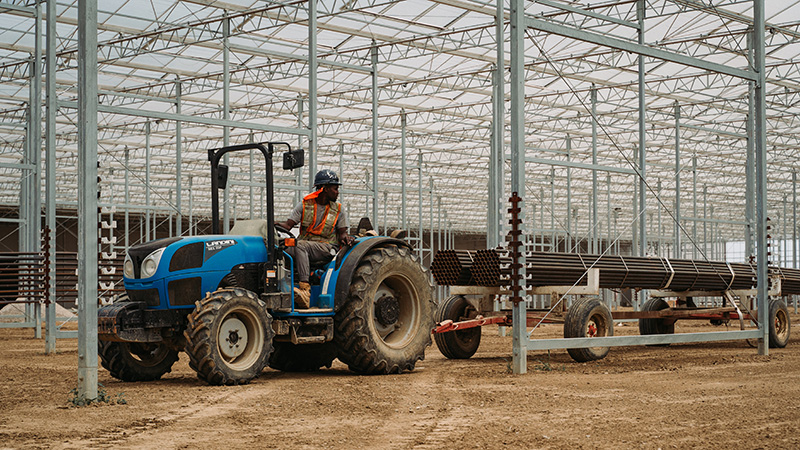How Cannabis Growers Can Manage the THC-Terpenes Connection
 For more than two decades, cannabis connoisseurs and growers have obsessed over how terpenes and cannabinoids interact with each other to generate specific effects. As the regulated cannabis industry developed, operators found new ways to incorporate this concept into “full spectrum” products or described how they provide a “whole plant experience.”
For more than two decades, cannabis connoisseurs and growers have obsessed over how terpenes and cannabinoids interact with each other to generate specific effects. As the regulated cannabis industry developed, operators found new ways to incorporate this concept into “full spectrum” products or described how they provide a “whole plant experience.”
Over time, the industry began to focus on heavy THC content as the arbiter of what qualifies as “quality” cannabis. But even as longtime cannabis consumers clamored for higher levels of THC, a new breed of consumers began to seek a more nuanced experience created – in theory – by the interaction between a plant’s terpene profile and cannabinoid content (including THC). Suddenly, terpenes were on everyone’s mind – and have stayed front and center for several years.
Then, a funny thing happened this year: We found out that the Entourage Effect is real.
Study Confirms Relationship Between Terpenes and THC
The phrase “entourage effect” in relation to terpenes and THC was first coined in 1999 by a group of researchers led by cannabis scientist Raphael Mechoulam, who was the first to discover and identify THC. Regarded as the godfather of cannabis researchers by many, Mechoulam was one of the first scientists to explore the structure and functions of the phytochemical compounds produced by cannabis plants. He believed THC interacted with terpenes synergistically to enhance and modulate the overall psychoactive effects of ingesting the cannabis plant. As it turns out, Mechoulam’s hypothesis was right all along: Different combinations of terpenes, THC, and other minor cannabinoids can generate different effects.
A study recently released in Biochemical Pharmacology confirms that many cannabis terpenes do in fact synergize with THC to create increased CB1 receptor activation in the human body’s endocannabinoid system. The study examined the effect of 16 terpenes and of THC-terpene mixtures on CB1 receptor activity using a heterologous expression system. Utilizing terpene-to-THC ratios like those commonly found in cannabis plants — approximately 1:10 — the study demonstrated that all terpenes, when tested individually, activate CB1 receptors up to 10% to 50% greater than a normal response activation by THC alone.
According to the study, the magnitude of increased receptor activity varied among the 16 terpenes tested. The combinations of THC with a-pinene, b-pinene, myrcene, terpineol, and terpinolene showed significant increases amounting to greater than a 25% increase of the normalized response. Pinene, terpineol, and terpinolene are commonly associated with cerebral, uplifting, and euphoric effects. Myrcene is commonly associated with sedative effects. Consequently, what we have suspected and believed about the synergistic relationship between terpenes and THC is in fact true.
It is important to emphasize that the study utilized terpene-to-THC ratios that mimic those found in nature, making the data more meaningful as the ratios directly correlate to typical accumulation of cannabinoids and terpenes in cannabis plants. Earlier studies conducted on this topic used a 1:1 ratio of terpenes to THC, which is not a true representation of natural accumulation.
What Might This Mean for Growers and Consumers
The recent study provides scientific clarification for what we have suspected for years: Terpenes directly affect THC in a synergistic way, enhancing the overall experience. And while there continues to be a need for ongoing research, the study reveals new opportunities for cannabis operators to develop and market cultivars in different ways. With the expanded knowledge of the synergistic relationship between the phytochemical compounds produced by cannabis plants, operators can focus even more on identifying terpene-to-THC formulations that address specific customer needs and desires. In addition, the new research results make it more likely that operators can accurately predict the effects of particular products.
The cannabis industry is still very much in its infancy. As the industry grows, there will be a gradual shift in the products that cannabis consumers seek out as customers become more educated and the industry matures. Just as the beer industry shifted from a focus on large batch, less-than-desirable-tasting beer to carefully crafted flavorful beer, a similar market evolution will manifest in cannabis. Consumers will begin seeking out products with diverse cannabinoid and terpene-rich profiles in place of the lower terpene content cultivars with higher THC (the “bang for your buck” mentality). While there will always be a place on the shelf for the high-testing THC flower, products with reduced THC content but more pronounced terpene profiles will begin to appeal to more customers. As more information becomes available about the effects of specific terpene-THC combinations and ratios, the opportunities for even more refined and specific products will increase. Consumers may begin to see more products offering to generate specific effects – and those product claims may become increasingly more precise.
Although the recent research findings are very exciting, it only magnifies how little we truly know about the synergistic relationships between THC, terpenes, and other cannabinoids. It took more than two decades to finally convert the Entourage Effect from theory to fact through this new study. Let’s hope that the pace of research and new discoveries only accelerates as the cannabis industry continues to grow and evolve.









